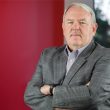Perhaps a corner has been turned on 700 MHz
Last week at the International Wireless Communications Exposition (IWCE) in Las Vegas, Verizon Wireless’ Steve Zipperstein floated the idea of giving the 10 MHz of spectrum in the 700 MHz band—known as the D Block—to public safety, which would pair it with 10 MHz of its own airwaves in the band, giving public safety 20 MHz of spectrum to build broadband networks for first responders. Instead of a single national licensee for the spectrum, regional or local licensees in the public-safety sector would solicit commercial operators via a bid process to construct networks—built to a national standard, to enable interoperability—that likely would try to leverage existing infrastructure, which would save enormous time and money.
It’s not a new idea, said Stacey Black, vice president of strategic programs/marketing in AT&T Mobility’s government solutions group, noting that AT&T Mobility and Verizon Wireless both presented the idea to the FCC last July. However, it is an idea that reflects feedback that the carriers have been getting from the public-safety sector, according to Black. Indeed, several major cities have said they now favor this new approach.
The fly in the ointment is that this approach would require legislative action from Congress, as current law requires the FCC to auction the spectrum to commercial interests, which would then work with public safety in a public/private partnership to build out the network. Black believes the climate is right for such legislative change.
“If you look at the Obama administration’s web site, there’s a statement that says they want to support public-safety communications,” said Black, who was speaking during a panel discussion on this topic at IWCE, two days after Zipperstein’s keynote speech. “I think the D Block issue has gone on long enough, and I think a lot of people [in Washington] would like to get it off their desks. So if any time is right, this is the time.”
Erika Olsen, deputy chief of the FCC’s public safety and homeland security bureau, agreed. “I don’t have a Magic 8-ball, but the Obama administration has made several comments supporting public-safety communications, so we do have a new, fresh environment.”
Black said AT&T agrees with Verizon Wireless that Congress should create a taxpayer-funded stimulus package to fund the buildout of these networks. “There isn’t a better time to ask than now,” he said.
Like Zipperstein, Black said AT&T and its lobbyists would support public safety if it decided that it wanted to pursue this idea and ask Congress for new legislation.
“We plan on standing behind public safety and its efforts to get the legislative change required to reallocate the D Block to public safety,” Black said. “But public safety has to take the lead on this.”
After the session, Black explained why. “It’s a public-safety initiative, first of all,” he said. “And public safety has made its point very clear in comments to the FCC regarding the third [further notice of proposed rulemaking] that they want local control and the [spectrum] allocated to them. They need to be the ones telling legislators their requirements. We stand ready to back them up, if they need it.”
Harlin McEwen, chairman of the Public Safety Spectrum Trust, believes that nationwide oversight of this network is essential to ensure that a “haves versus have-nots” dichotomy doesn’t ensue. He also thinks the nationwide public/private partnership model is still workable. But McEwen said during IWCE that he’s open to new ideas.
“If this proposal doesn’t succeed in one form or another, then public safety will have lost a one-time opportunity to dramatically improve its communications,” he said. “And I would find that very sad.”
It not only would be sad, it would be unconscionable. That said, I am more hopeful than ever that a workable plan will be found and that broadband networks will be built. I’ve always believed so, given its mega-importance, but I have to admit I’ve had doubts lately. Those doubts have been dispelled, at least for the moment. I think public safety will unite behind this approach. As McEwen hinted, it doesn’t matter how it gets done, just that it does. Did anyone think this network would become a reality without the support of both Verizon Wireless and AT&T Mobility? And now both of these behemoths are telling public safety, “This is how to get it done.” I think public safety will warm to the message. And, given the enormous lobbying muscle that first responders and the commercial-wireless sector wield on Capitol Hill, I believe Congress will warm to it, too.
Of course, as with just about everything in life, the devil will be in the details, and plenty of questions already are being asked concerning this new approach. A big one is, where will the money come from should Congress fail to pass a stimulus package for this initiative? Black believes it is a question easily answered.
“Using the leveraged-network model, we believe a one-hundred-square-mile buildout would cost less than $5 million dollars” he said. “We think that kind of buildout cost could be covered by the current grant programs that are out there.”
But let’s not get ahead of ourselves. As a friend of mine once told me, the best way to eat an elephant is one spoonful at a time—and this is one big elephant. There’s no sense worrying about how to pay for wireless broadband capability for first responders until it’s been decided how it will be built.
What do you think? Tell us in the comment box below.

















